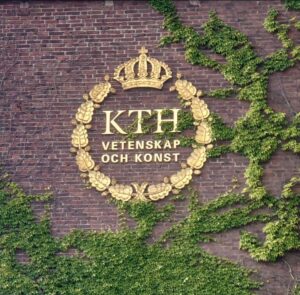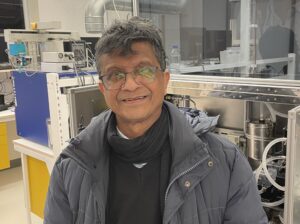Researchers in Sweden have unveiled an innovative approach for producing hydrogen gas, potentially reshaping the future of sustainable energy. Unlike traditional methods, this innovative technique does not require separators such as membranes, marking a significant breakthrough. It ensures a safer and more efficient separation of hydrogen and oxygen gases obtained by splitting water, thereby significantly reducing the risk of dangerous gas mixing.
Led by Professor Joydeep Dutta of the KTH Royal Institute of Technology in Sweden, the team has spearheaded the development of a system that utilizes unique electrodes, which do not require rare-earth materials, to produce hydrogen and oxygen separately lowering the risk of gas mixing.
“Producing hydrogen by splitting water has traditionally been risky due to the explosive nature of hydrogen and oxygen when mixed. Scientists typically use a membrane to keep them separate, as both gases are produced simultaneously during water breakdown.”
“Our groundbreaking design eliminates the need for a membrane by producing hydrogen and oxygen at different times, significantly enhancing safety. This patented technology represents a major leap forward towards cleaner, more sustainable energy,” explains Professor Dutta.
“The same electrodes are effective for producing either hydrogen or oxygen. Furthermore, our method is versatile, functioning with both acidic and alkaline water,” Prof. Dutta adds.
As the author of an award-winning nanotechnology textbook recognized by the American Library Association in 2010, he has developed a method that is not only efficient and simple but also scalable. This process can operate continuously for extended periods without significant wear on the materials. The design’s flexibility and robustness make it an excellent candidate for clean and safe hydrogen fuel production. By integrating traditional water-splitting with an electricity storage method, like a capacitor, we envision sustainable green hydrogen production directly coupled with solar cells or windmills.

This breakthrough, which marries novel design with the rational application of materials science, is detailed in a peer-reviewed research paper authored by Professor Dutta and his students. The paper, entitled ‘Decoupled Supercapacitive Electrolyzer for Membrane-Free Water Splitting,’ has been published in the prestigious journal ‘Science Advances’ by the American Association for the Advancement of Science (AAAS).
The co-authors include Esteban A. Toledo-Carrillo, Mario García-Rodríguez, and Lorena M. Sánchez-Moreno, along with Joydeep Dutta. While Esteban and Professor Dutta are associated with KTH Royal Institute of Technology, Mario and Lorena are affiliated with Universidad de Alicante in Spain.
Access full paper here: https://www.science.org/doi/full/10.1126/sciadv.adi3180

